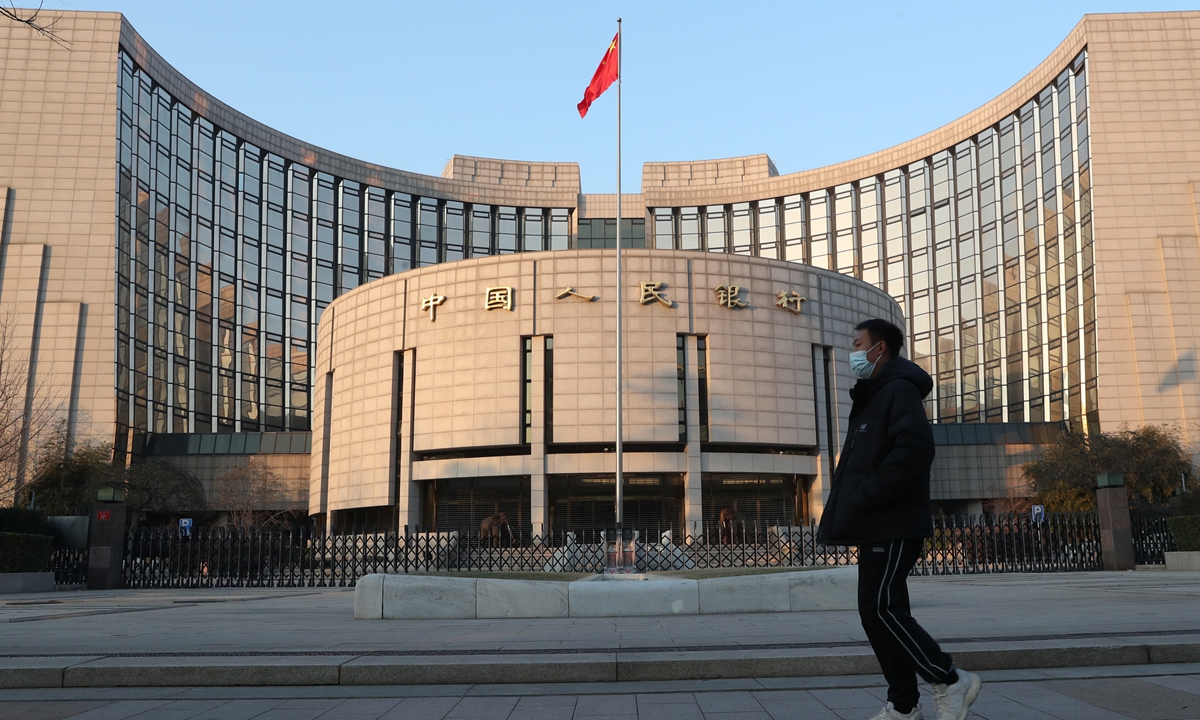
China's central bank Photo: CFP
The People's Bank of China (PBC), the country's central bank, announced on Monday that it would lower financial institutions' foreign exchange reserve requirement ratio (RRR) by 2 percentage points (pps) to 6 percent, to help financial institutions' ability to use foreign exchange funds.
The cut, which will be effective from September 15, came amid a recent round of weakening by the yuan, which briefly fell below 6.95 to the US dollar on Monday afternoon. After the PBC's announcement, the offshore yuan swiftly strengthened by nearly 200 basis points against the US dollar.
China's foreign exchange market is operating normally, with orderly flows of cross-border capital, an official said on Monday. Though the spillover effect of US monetary policy has an impact on China's foreign exchange market, the overall impact remains controllable, Liu Guoqiang, vice governor of PBC, said at a press conference.
In the short term, two-way volatility in the yuan exchange rate will be the norm; in the long term, it is obvious that the yuan will gain recognition across the international market, Liu said.
Behind the stable operation of the foreign exchange market, China's economic fundamentals remain promising and its economic resilience remains strong, the official said. "I believe that the economy is entering a new climbing phase," Liu said.
Against the backdrop of the US Fed pursuing a round of interest rate hikes, China has kept an independent path to reasonably lower interest rates so as to reduce businesses' financing costs and boost domestic demand, Dong Dengxin, director of the Finance and Securities Institute of the Wuhan University of Science and Technology, told the Global Times.
A certain degree of yuan depreciation is normal in such circumstances, but the volatility has remained within a controllable range of the central bank, Dong said.
Against the backdrop of the US dollar appreciating 14.6 percent year-to-date, the depreciation of the yuan has been mild compared with other major currencies, Liu noted.
The euro lost 12 percent of its value from January to August, the pound depreciated by 14 percent and the yen depreciated by 17 percent, while the yuan only lost 8 percent of its value in the period.
Within the IMF's Special Drawing Rights basket, the yuan has appreciated against all non-US dollar currencies, Liu added.
The yuan's exchange rate was relatively stable for three months before the latest depreciation round started from August 11.
In April, the PBC announced plans to cut the foreign exchange reserve requirements for financial institutions by 1 percentage points to 8 percent amid the yuan's accelerated depreciation at the time.
Prior to the cut that took effect in mid-May, the central bank raised the forex reserve requirement ratio twice last year. First came an increase of 2 percentage points from 5 percent in mid-June, followed by a hike from 7 percent to 9 percent in mid-December, in a move to offset the yuan's sustained strength throughout 2021.




